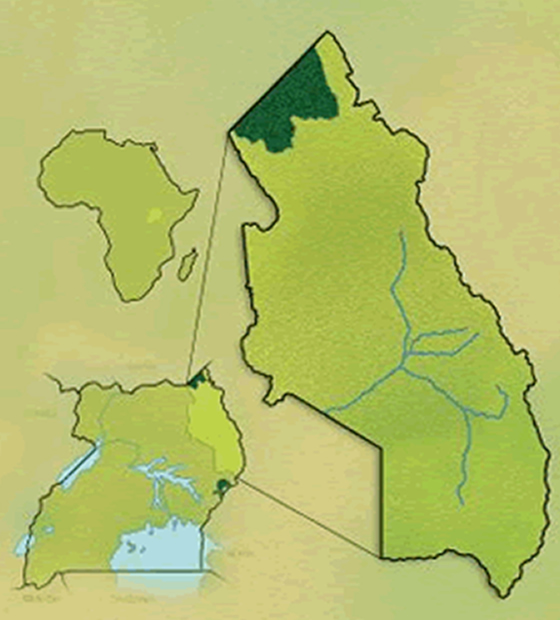Karamoja is the most remote, inhospitable, and poor region of Uganda. It is inhabited by a tribe called the Karimojong. Uganda’s land of warrior nomads stretches across an isolated corner of Africa named after the people who have there lived for centuries: the Karimojong of Karamoja.
With more than 27,000 square kilometers, this arid expanse of savannah and bush forms the northeast edge of Uganda where it borders Kenya and the Sudan, with Ethiopia not far off.
 Its natural borders alone tell something about the region’s remoteness. To its east stands the Rift Valley escarpment towering over the Kenyan plains and scrubland. To the north lie the pristine basin of Kidepo National Park and also a mountainous vastness that leads into the Sudan. Similarly, to the south, there are the rugged peaks of Mount Elgon National Park, which were formed by volcanic eruptions millions of years ago. In the west, abundant swamps enter into the Acholilands.
Its natural borders alone tell something about the region’s remoteness. To its east stands the Rift Valley escarpment towering over the Kenyan plains and scrubland. To the north lie the pristine basin of Kidepo National Park and also a mountainous vastness that leads into the Sudan. Similarly, to the south, there are the rugged peaks of Mount Elgon National Park, which were formed by volcanic eruptions millions of years ago. In the west, abundant swamps enter into the Acholilands.
Set on a large plateau, much of Karamoja is more than 1,000 meters above sea level, and four main mountains overlook the region’s savannah, highlands and river valleys: Mount Morungole in the north, Mount Moroto in the east, Mount Kadam in the south and Mount Napak in the west. According to the most recent Ugandan census figures, some 956,000 people live in Karamoja, with more than a third of them being Karimojong. The actual numbers, however, are estimated to be higher. With Moroto town as its regional capital, Karamoja has five districts — Moroto, Kotido, Nakapiripirit, Abim and Kaabong. District towns have a degree of population density, but pastoral life as well as the scarcity of rain, keeps people on the move and well dispersed.
Karamoja’s climate is harsh. In many areas, rains do not often exceed 800 millimeters per year, sometimes hovering around a mere 500 millimeters. (At least 1,000 millimeters is needed to sustain people in a land without infrastructure.) The precipitation that does fall usually comes sporadically between June and October with the desert winds and the hot dry season taking over the land from November to March. In recent years, drought has become more frequent and severe.
Beyond natural and national borders, inter-regional conflicts have kept Karamoja cut off from the rest of the world and its own country. The longest running civil wars in Africa have surrounded and spilled into the region between southern Sudan and northern Uganda.
The Karimojong themselves, however, also have contributed to the region’s isolation. The Karimojong are a cattle rustling, warrior based tribe related to the Pokot people of Southern Sudan and the Turkana of western Kenya. Traditionally, cows are the highest form of status for the Karamojong. Without cows, men cannot get married and are considered very low status. Traditionally, Karamojong warriors would steal cattle from nearby clans. Before guns arrived, loss of life was mainly minimal and the cows were often re-stolen days later in an almost ritualistic process. Yet today, the Karamojong still struggle with the concept of the rule of law.
Consequently, individual life , property rights (particularly cattle), and safe travel, mean little. Over the last 40 years, their culture has been severely affected by the outside world; unfortunately for the worse. Automatic guns (AK 47s) replaced bows and spears almost overnight. The mixture of godlike power, harsh ecosystems, and the status that cows have in the Karimojong culture, has lead to a degradation of a once proud and noble people. “Warriors” now come into defenseless villagers and steal anything not locked down. This includes cows, goats, chickens, maize, beans, etc… What is more is that they kill people they find along the roadside for no other reason it seems, than for sport. This type of wonton pillaging and killing is not part of their traditional behavior. This barbaric behavior has become so rampant that even some of the Karamojong communities themselves are tired of it. The women are tired of losing their sons, brothers, and husbands to this behavior. There are no easy, fast answers to this problem, but one thing is certain: education is a major factor in eventually solving it.
